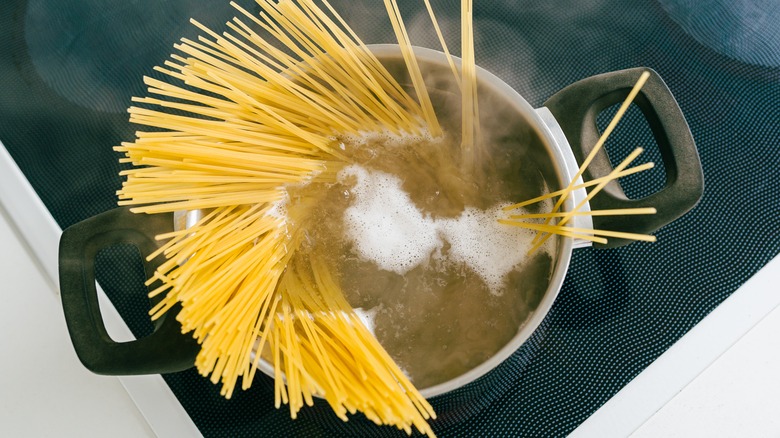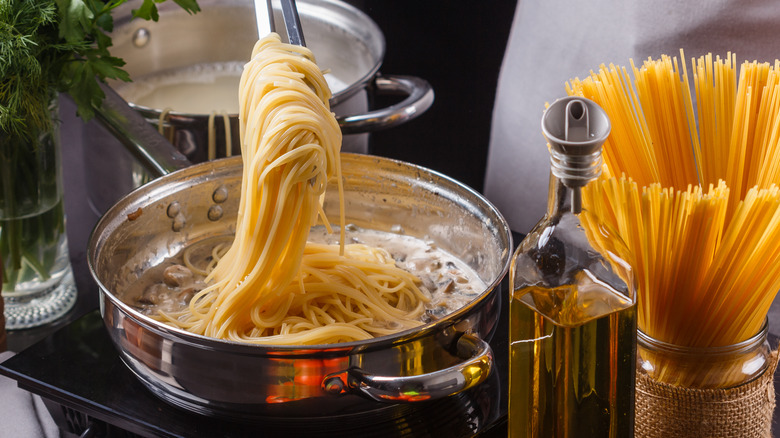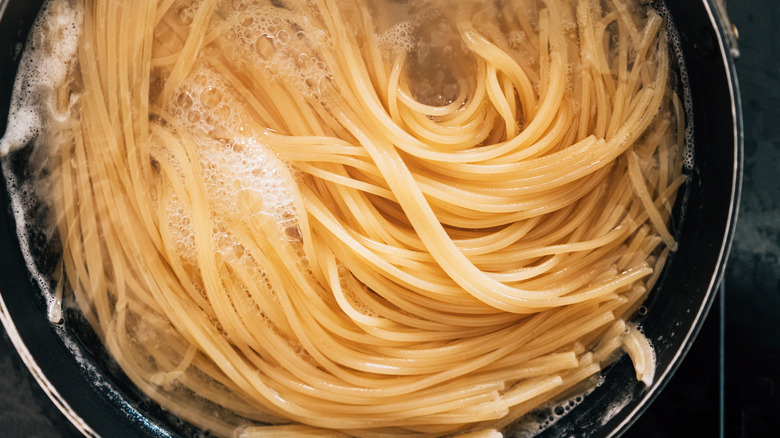The Beginner Pasta Tip You Need To Remember When Cooking Noodles
For someone new in the kitchen, it may seem that successfully cooking pasta is as simple as boiling water, but the truth is, it's a bit more complicated than that. There are many hacks for making pasta that you need to know if you want to perfect your carb preparation. With a few basic strategies, you can level up your pasta game while keeping the barrier to entry pretty low. Hey — you gotta start somewhere.
When cooking pasta at any level of proficiency, one outcome you want to avoid is a big clump of noodles on your plate. When your strands or pieces stick together in the pot, the finished product can turn out unevenly cooked — too soft in some places, maybe even still crunchy in others — and it will be impossible to sauce properly. Luckily there are some simple ways to stop this from happening that won't require any extra ingredients, tools, or time — just a watchful eye. One is that you should monitor your cooking pasta for stuck-together strands. That way, you can fix the problem right away by removing them with a fork and separating the noodles.
Clumping causes and how to prevent them
One of the reasons pasta water is so useful is that it is enriched with the starch that results from cooking your noodles. This sticky substance is indispensable for helping sauce adhere to your pasta, or to emulsify into a silky, creamy coating (like in the case of cacio e pepe). That said, the flip side of this situation is that as the noodles release that starch into the water, it can also cause them to cling together.
You can avoid this by making sure you don't overcrowd your pot. Keep in mind that as it cooks, pasta absorbs water and swells, so even if it seems like plenty of room at first, your carbs may end up quickly squeezed into too close quarters. It's best to be generous with space and aim for somewhere between four and five quarts of water per pound of pasta.
Also, if you've ever wondered whether it's really necessary to stir pasta as it cooks, the answer is that this is generally believed to be a good practice. Occasionally agitating the contents of your pot with a spoon will prevent pasta from sticking together and solidifying into a glob. This is particularly true of long strands like linguini, fettuccine, spaghetti, and the like.
More tips for beginner pasta makers
Beyond keeping your strands separate, a few tips will help you get your pasta cooking practice off to a good start. While it can be exciting to pop those noodles into the pot as fast as possible, you must wait for the water to come to a full, rolling boil. Once you add your pasta, keep an eye on those bubbles; adding the room-temperature product will cause the water to cool a bit, but if the temperature drops too far, it can promote that pesky clumping.
Seasoning the water with salt is a pro move, as it helps flavor your pasta, but refrain from adding oil as this will make it tough for your sauce to stick. If you aren't sure when your pasta is through cooking, trust your palate and senses — even if you're new to the process — and taste for doneness. With these starter tips in mind, you can start your pasta-making journey with confidence.


